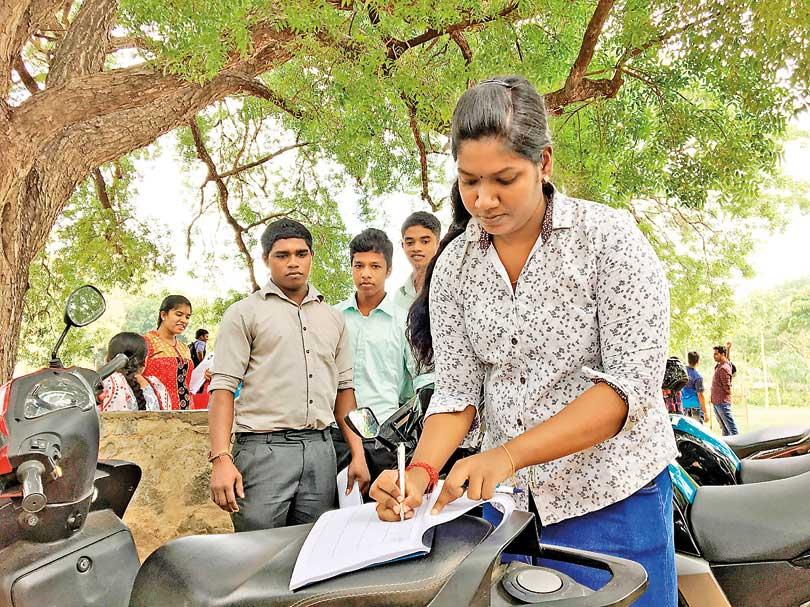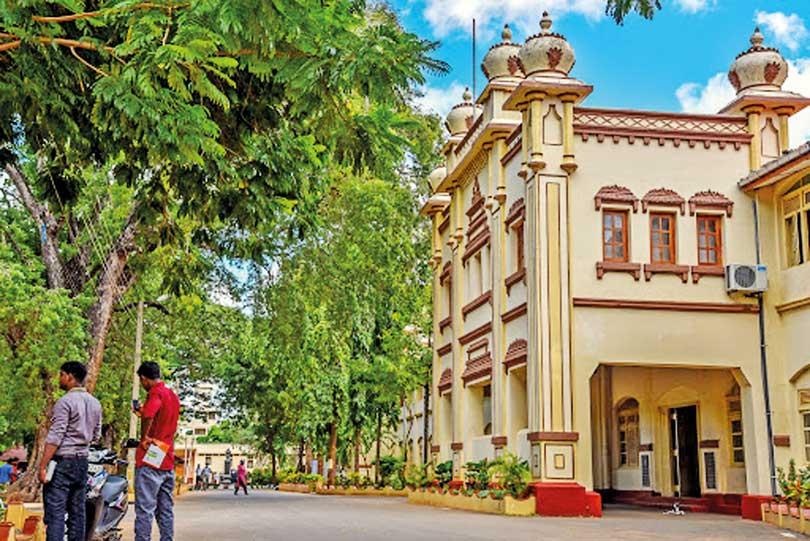Reply To:
Name - Reply Comment

 Students who faced the G.C.E. Advanced Level Examination in 2019 are facing a dilemma. The examination was held under two syllabi, old and new. Now the students are facing a major predicament; how will this affect this year’s university intake?
Students who faced the G.C.E. Advanced Level Examination in 2019 are facing a dilemma. The examination was held under two syllabi, old and new. Now the students are facing a major predicament; how will this affect this year’s university intake?
A similar situation arose after the 2011 A/L examination as it was also held under two syllabi. This caused a huge controversy leading to a court case.
The UGC has appointed a Committee of Experts to propose criteria
It’s alleged that the UGC had completely ignored the final court order
They should clarify how they wish to recruit students to these universities
According to the Medical Faculty Students’ Action Committee, in 2011, three court verdicts were issued in relation to the university admission system. The first court decision dictated that all students should be enrolled under a common Z-score. However, this court decision was challenged in the court as the two syllabi and the two question papers were different from one another.
On examination, the court decided that the New Syllabus and the Old Syllabus which were used for the Advanced Level Examination, 2011 cannot be considered as a single population as they belong to two different categories. Therefore, it was decided that the two groups of students, who sat for the Advanced Level Examination in 2011, should be considered as two different student populations.
The committee states that the second court decision dictated that two separate Z-scores should be calculated for the two different student populations. Accordingly, the court had decided to recruit students according to the mean value of student intake in the last five years. However, this method of intake was also deemed unfair as large deviations had been observed in the student intake during the previous five years.
“Finally the court decided that the student intake for the 1st shy students should be decided according to the statistics in the year with highest student admission from the 1st shy from the past five years. Similarly, the intake from 2nd and 3rd shy students should depend on the statistics of the year with highest 2nd and 3rd shy student admission from the past five years,” the committee said.
Liyanage reckons that for science based subjects, it would be difficult to increase the intake
The University Grants Commission (UGC) issued a notice stating that students who sat for the G.C.E. (A/L) Examination in the year 2019 under new syllabus and old syllabus would be considered as two distinct populations as directed by the Supreme Court in SC (FR) Application No. 29/2012 in relation to students who sat for the G.C.E. (A/L) Examination in the year 2011 under new and old syllabi.
The UGC has appointed a Committee of Experts to propose criteria as to how the selection of students to universities is made for the academic year 2019/2020 based on the Z-Scores that had been obtained by them at the G.C.E. (A/L) Examination in the year 2019.
Based on the recommendations made by the said Committee of Experts, the UGC decided that the percentage of students to be admitted to universities from those sitting for the G.C.E. (A/L) Examination under the new syllabus in the year 2019 for each degree programme (course of study) on district merit from each district and all island merit shall be the composite average percentage of students admitted to universities through their first attempt during the five year period from 2013 to 2017 for that particular degree programme (course of study) on district merit from each district and all island merit, respectively.
Similarly, the commission said the percentage of students to be admitted to universities from the old syllabus in the year 2019 for each degree programme (course of study) on district merit from each district and all island merit shall be the composite average percentage of students admitted to universities through their second and third attempts during the five year period from 2013 to 2017 for that particular degree programme (course of study) on district merit from each district and all island merit, respectively.
The Medical Faculty Students’ Action Committee alleged that the UGC had completely ignored the final court order when the commission released a media statement stating that the student enrollment would be done according to the second court order.
“The UGC is carrying out an illegal conspiracy to minimise the student intake for this year causing many problems to the students,” the committee alleged.
However, the UGC Chairman Sampath Amaratunga emphasised that the commission would not take illegal action and that they were doing their best to maximise the student intake for this year.
“The relevant percentage calculation is a very complicated method that is still being discussed at the commission,” the chairman added.

It seems that although the UGC had given a general idea about how they wish to enroll students for 2019/2020 academic year, the students who faced the exam are troubled as the exact percentages have not been announced yet.
“This is a big issue. We can’t take any decision regarding universities. We can’t get an idea about the course we are selected for. They should publish the percentages as soon as possible. They could inform the students how they wish to recruit students under the Merit system and District quota. They should clarify how they wish to recruit students to these universities and on what basis,” Kemini Abeysooriya, a Sinhala medium second shy student told the Daily Mirror
Adding to that a Sinhala Medium first shy student said that according to the Right to Information Act in Sri Lanka, they were entitled to know the percentage intake from both student populations during the last five years.
Another second shy student from English medium said that applications for foreign universities, private universities and KDU (Kothalawala Defence University) have already been called and they were at a predicament because they did not know whether they needed to apply or not. “Please give us a proper idea about the procedure to be followed as this would decide our future,” Sajith Sahib, a Tamil medium first shy student emphasised.
Amaratunga said that all medical faculties have already agreed to increase the intake of students and two new medical faculties affiliated to the Moratuwa and Wayamba universities of Sri Lanka were to be established for this year
At the moment there is a general uproar in social media platforms regarding this university entrance issue for the 2019/20 academic year. It seems that a majority believes that the best solution for all these issues would be to increase the university intake for this year.
“The best solution would be to increase the student intake. The government has a responsibility to ensure that everyone who deserves to enter universities should have that opportunity,” Siluni Viranja, a first shy English medium student said.
“But the intake can’t be increased by large numbers suddenly,” commented Acting Vice-Chancellor of the University of Sri Jayewardenepura Senior Professor Sudantha Liyanage.
The UGC chairman said there were many factors to be considered such as laboratory facilities, computer facilities, sanitary facilities, and canteen and hostel facilities when increasing the intake.
Liyanage reckons that for science based subjects, it would be difficult to increase the intake due to abundance of practical lessons in the curriculum which would lead to a shortage of laboratory facilities. Moreover, he said the biggest issue for children would be hostel facilities.
Therefore he believes that increasing the intake for universities in highly remote areas might be difficult due to lack of proper transport systems in the case of minimal hostel facilities.
However, Liyanage believes that if an expansion of these facilities occurs through the government’s involvement, then a positive response could be expected.
“From our experience in 2011, we can expect an increased intake of students. Therefore if we get to know the higher numbers by June or July, we have few more months to work out how we are going to accommodate those higher numbers,” he said. He believes that universities would be able to shift things around for this year on short notice as a temporary measure.
“ If the government provides us the necessary facilities, we are ready to increase the student intake,” Liyanage stated.
“Increasing the university intake is the number one priority of the UGC,” Chairman Amaratunga said.
Amaratunga said that all medical faculties have already agreed to increase the intake of students and two new medical faculties affiliated to the Moratuwa and Wayamba universities of Sri Lanka were to be established for this year. He emphasised that the vice chancellors of all universities were very supportive, but the support of many other sectors was necessary to make this mission a success.
He said that the UGC was committed to take all measures necessary to maximize the student intake. “But we must ensure that the standard of the university is not affected when increasing the intake,” the chairman added.
“His Excellency the President’s vision is to expand the higher education system and provide new opportunities to the younger generation. As a commission that vision is very much helpful because we can go for an expansion as the government will definitely support us,” Amaratunga commented.
Meanwhile, referring to the UGC University Admission Handbooks for the 2019/2020, the chairman said a general idea about the percentage calculations with regards to student intake from old and new syllabus student populations would be mentioned in them.
Students who faced the G.C.E. Advanced Level Examination in the year 2019 are at a dilemma. The UGC holds their future in the palm of its hands. The government should take action to protect the rights of these students. After all, these students are the future intellectuals of the country.